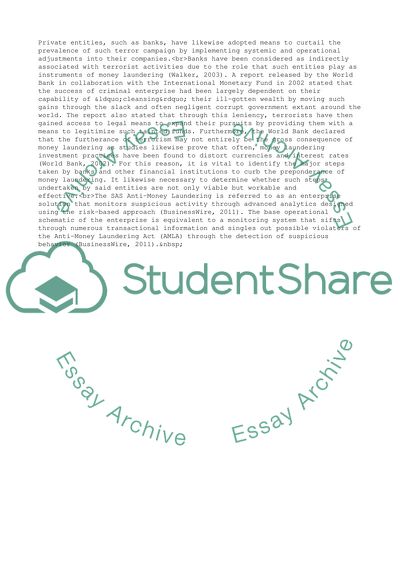Cite this document
(The SAS Anti-Money Laundering Enterprise Research Paper, n.d.)
The SAS Anti-Money Laundering Enterprise Research Paper. Retrieved from https://studentshare.org/management/1761568-bank-security-act-anti-money-laundering
The SAS Anti-Money Laundering Enterprise Research Paper. Retrieved from https://studentshare.org/management/1761568-bank-security-act-anti-money-laundering
(The SAS Anti-Money Laundering Enterprise Research Paper)
The SAS Anti-Money Laundering Enterprise Research Paper. https://studentshare.org/management/1761568-bank-security-act-anti-money-laundering.
The SAS Anti-Money Laundering Enterprise Research Paper. https://studentshare.org/management/1761568-bank-security-act-anti-money-laundering.
“The SAS Anti-Money Laundering Enterprise Research Paper”, n.d. https://studentshare.org/management/1761568-bank-security-act-anti-money-laundering.


